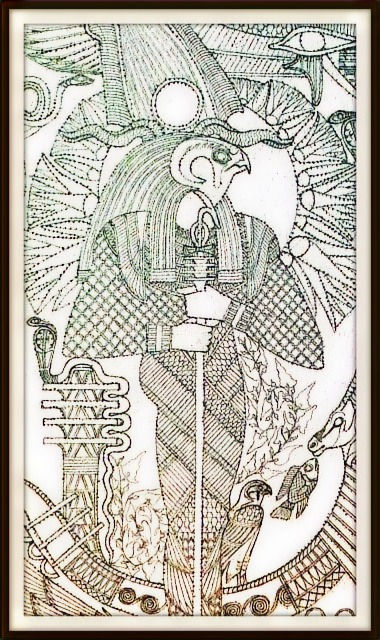Photo Essay: The Sacred West Triptych/ Part 1
- iconsofkemet
- Jun 11, 2021
- 3 min read
NOTE: This feature was originally posted on the Icons of Kemet blog on Blogger on Thursday, October 8, 2015
My most recent work is a departure from my previous working methods. Instead of focusing on a

solitary deity, allowing conception to take place one icon panel at a time, I have been compelled to bring through three divine bodies at a time; causing my work to become the process of actualizing the Netjeru (Gods) in a manner where a dialogue is being constructed between three deities whose powers and spheres of influence are intimately intertwined.
My new tryptic- which I am calling The Sacred West Triptych- is the first in a series of four icon triptychs, which I am collectively labeling Gods of Life, Gods of Death. This work concerns how the Gods interact with the two most fundamental aspects of creation and existence- life and death. Each triptych summons the vital essence or power (sekhem) of three Netjeru working co-creatively in nature and in human nature. A very great part of that nature is how we enter this world, and how we depart it. Living things are brought forth into creation, and they depart one aspect of that creation as an entrance into another.

We see in this panel the God Ptah-Sokar-Ausir in His most prominent guise, that of a mummiform man with the head of a Levant sparrow hawk (Accipiter brevipes), and crowned with the tall atef crown. Solar disk and twisted ram horns provide an iconographic link between the God Sokar and Ra, Whose passage through the domain of Sokar in the Duat gives restoration and resurrection to the Sun-God after His entry into the after death state.
Another embodiment of the Sun God's renewal, the winged Wedjat Eye, fans its feathers in a gesture of both reception and transmission, where the God Ptah-Sokar-Ausir receives the body of Ra as the midnight sun, and then fills it with His power of transfiguration. This moment of transfiguration is heralded by the appearance of the iaret or rearing cobra, the Cobra Goddess Who becomes the vital force of the Sun-God projected throughout creation.

The solar disk emerges from behind the head of Sokar, and we know that this is the newly born Sun-God, revivified after His progress through the Duat after death realm, because it bursts with a spray of opening lotus blossoms and buds, which signify the renewal of all life after death, together with the very moment of creation itself. The nature of this miracle is denoted in the staff/ scepter held in the hands of the Ptah aspect of Ptah-Sokar-Ausir; the ankh djed was, which combines life, resurrection (or stability) and power respectively. These are the three aspects whose interwoven power allows existence and creation to continue in their endless cycles of becoming.

The Djed Column, symbolizing the backbone of the God Ausir, stands erect in the stern of the sacred Henu Ark, the boat representing both body and domain of the God Sokar. In this instance, the Djed epitomizes the resurrection of the God Ausir from the dead, the process by which all dead or dormant life is rejuvenated into the state of perpetual life. The Djed denotes this process of being cut down, yet rising again, being transferred the vital essence of the Netjer (God Ptah-Sokar-Ausir). This essence is seen in the writhing body of the Cobra Goddess rising up from the top of the Djed to bestow the living power of the God.
Behind the mummified body of the God- who is wrapped in the embrace of sparrow hawk wings- we see the strange form of the Henu Ark, which is not only a physical residence or shrine of the God, but more significantly stands for the spiritual domain inhabited by the Netjer in that world beyond the world. The head of a white oryx or Arabian oryx (Oryx leucoryx) crowns the prow, signifying the power of the God, while two other emblems of Sokar, the sparrow hawk and Nile tilapia (Oreochromis niloticus), ornament the curvature of the Henu Ark's deck. The cabin of the Henu Ark- as used by the ancient Egyptians in the cult of Sokar- always enshrined the sacred funeral mound of the God, capped with the head or entire body of a sparrow hawk. In this icon, we see the God Himself standing in the central space, rising up in the place of the mound-shrine used to indicate the presence of Sokar. We see that pyramid-like mound, from which a sparrow hawk's head emerges, at the top of the icon panel, above the head of the God Sokar.








Comments